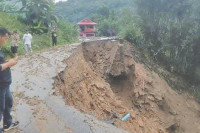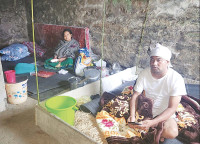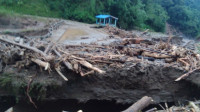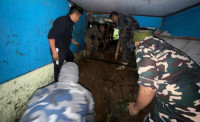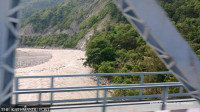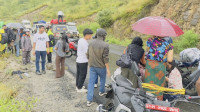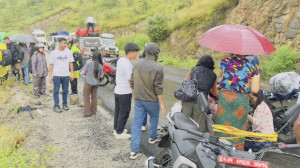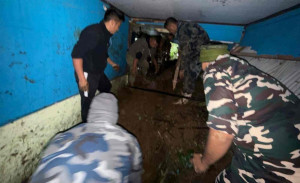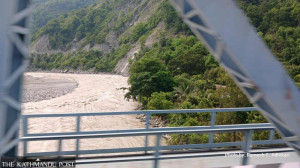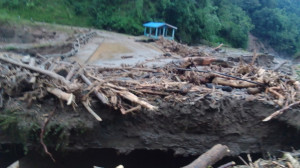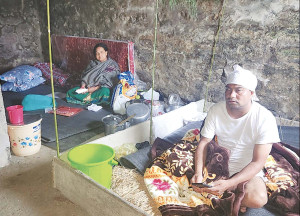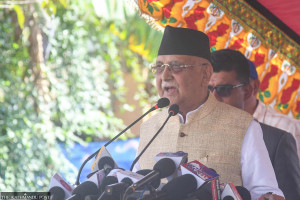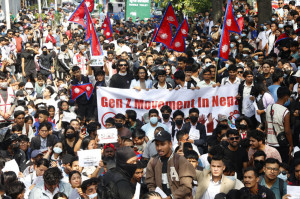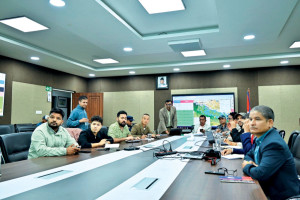Koshi Province
Koshi government puts flood and landslide losses to infrastructure at over Rs2 billion
Weekend’s disaster killed dozens and washed away roads, bridges, and drinking water projects in the province.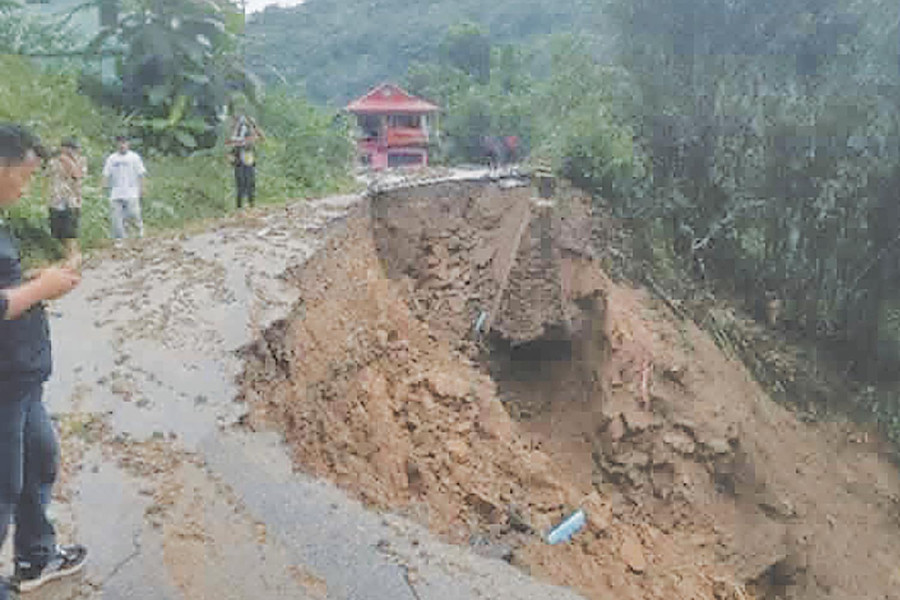
Parbat Portel
The devastating floods and landslides that battered eastern Nepal on October 4 and 5 not only swept away homes, farms and lives but also incurred huge damage on development infrastructure like roads, bridges and drinking water projects across Koshi province. Roads built under the provincial government’s plans collapsed, bridges were torn apart, and water supply systems were destroyed—laying bare the fragility of the country’s development structures.
According to a joint report by the Ministry of Physical Infrastructure Development and the Ministry of Energy, Drinking Water and Irrigation of Koshi province, the two-day disaster caused damage worth over Rs2.06 billion to public infrastructure. The figure, experts say, underscores how poorly designed and weakly executed many of the region’s infrastructure projects remain despite years of government spending.
The Ministry of Physical Infrastructure Development estimates that losses to roads and bridges alone exceed Rs1.98 billion. In Ilam district, which was the most affected, several roads built or financed by the provincial government either sank or were entirely washed away. “Road projects worth about Rs190 million have been lost in Ilam alone,” said Minister Bhupendra Rai. “Bridges worth an additional Rs385 million have been destroyed.”
Damage was not limited to Ilam. Across Panchthar, Taplejung, Sankhuwasabha, Solukhumbu and Okhaldhunga, dozens of rural roads have been blocked or buried under landslides. Of the 73 roads, 44 still remain completely obstructed, while 12 of 23 motorable bridges have been totally destroyed. A total of 20 suspension bridges remain impassable due to flood damage, officials said.
Experts have long warned that unchecked road expansion on fragile hillsides, often without proper drainage or slope stabilisation, has been amplifying landslide risks in eastern hills. This disaster, they say, is a grim reminder of those unheeded warnings.
According to the provincial Ministry of Energy, Drinking Water and Irrigation, 99 drinking water and irrigation projects have been severely damaged in the province, causing losses of over Rs70 million in Jhapa, Ilam and Panchthar alone. Pipelines have burst, reservoirs have been buried, and springs have dried up, causing acute shortage of clean water in many rural communities.
“It may take years to rebuild the destroyed infrastructure,” Energy Minister Ekaraj Karki said, adding that the provincial government would prioritise restoring essential services but warned that many systems might need complete reconstruction.
In response, the Provincial Disaster Management Committee has formed a high-level task force to oversee relief and reconstruction. The task force includes Economic Affairs Minister Ram Bahadur Magar, Infrastructure Minister Bhupendra Rai, and Internal Affairs Minister Rewati Raman Bhandari. Officials said the team would prepare a detailed action plan for rebuilding critical infrastructure.
The government has also announced relief funds of Rs2.5 million for Ilam, Rs1 million for Jhapa, and Rs500,000 each for Panchthar, Morang, and Sunsari districts. The amount will be used for immediate repair and temporary relief.
Experts say the focus should not only be on rebuilding what was lost but also on preventing future losses. “Reconstruction is not just about money—it’s about rebuilding trust in the province’s future,” said Bedraj Acharya, a development expert based in Biratnagar.
But for residents like Amit Rumdali Rai of Rajduwali in ward 10 of Ilam Municipality who lost everything to the Mai river flooding, the pain runs deeper. “Roads and bridges can be rebuilt,” he said. “But who will return the years of labour and investment that we lost to the flood?”




 14.63°C Kathmandu
14.63°C Kathmandu
